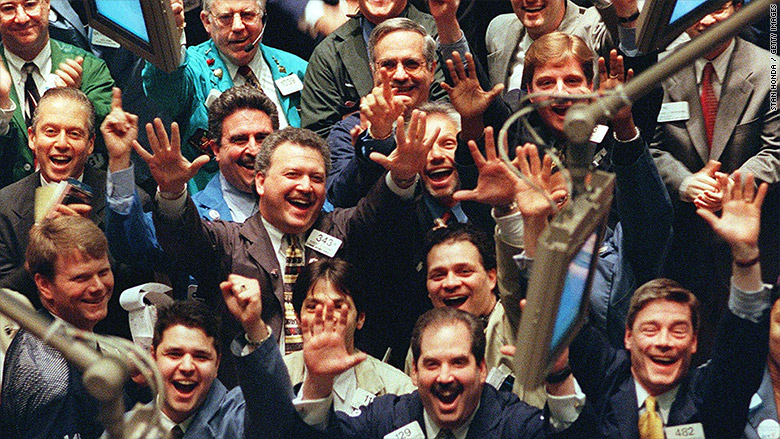
Dow 25,000 is a milestone more than 120 years in the making.
The average began tracking the most powerful corporate stocks in 1896, and has served as a broad measure of the market's health through 22 presidents, 22 recessions, a Great Depression, at least two crashes and innumerable rallies, corrections, bull and bear markets.
The blue chip reading finally cracked the 25,000 benchmark for the first time Thursday.
During the current bull market, the second longest in history, the Dow has nearly quadrupled in value, rising from 6,440 in March 2009, at the depths of the Great Recession.
Related: Most Americans aren't benefiting from the stock market boom
The milestones are coming faster and faster. It reached 20,000 less than a year ago, about a week into President Trump's tenure. It first closed above the 24,000 mark just five weeks ago on Nov. 30.
The index is based on the price of 30 stocks, the composition of which is tweaked occasionally to adjust for changes in the economy and the companies themselves. Today's Dow includes technology and healthcare stocks, for example. Past staples like autos, steel and tobacco are no longer represented.
Related: Could GE get booted from the Dow after 110 years?
Here are some important stops along the Dow's road to 25,000:
Dow is formed: The first daily close, on May 26, 1896, was 40.94. The Dow did not get off to a good start, plunging 30% to an all-time low of 28.48 by August that year.
Dow 100: The Dow first closed in triple digits in January 1906. That marked an impressive rally for the average, which had hit an all-time low when Teddy Roosevelt was president. The Federal Reserve would not be created for seven more years.

Crash of 1929: The Dow fell 38 points on Oct. 28 and 31 more points the next day. That might not sound bad today, but it represented back-to-back declines of 13% and 12% of the Dow's value. Those are still two of the worst one-day percentage declines in the index's history.
Dow 1,000: Nov. 14, 1972. Richard Nixon had just won re-election by taking 49 states. The Dow's components, which had been unchanged for 13 years, included Woolworth, Eastman Kodak and International Nickel.
Crash of 1987: On Oct. 19, the Dow plunged 508 points, a 23% drop, still the largest one-day percentage decline in history. A week later it took an 8% plunge. But the damage was short-lived: Within a year, the Dow was back to pre-crash levels.

Dow 10,000: March 29, 1999. The "irrational exuberance" of the tech bubble was in full swing as the Dow gained 1,000 points in less than a year to hit this benchmark. It gained 1,000 more points in just the next month. A year later, the tech bubble burst, sending the Dow down nearly 30% by September 2001.
Related: Today's Dow is a lot different from just 20 years ago
Meltdown of 2008-2009: The financial crisis caused the Dow to lose about half its value in less than a year, bottoming out to close at 6,547 on March 9, 2009. The worst day was Sept. 29, 2008, when the Dow lost a record 778 points after Congress rejected a $700 billion bank bailout. The bailout was later approved.
Dow 15,000: May 7, 2013. As the economy continued to recover from the Great Recession, the Dow had one of the current bull market's strongest periods. It crossed the 15,000 mark and finished the year up 26%, marking the best full-year performance of the recent bull market. The Dow nearly matched that in 2017, rising 25%.


